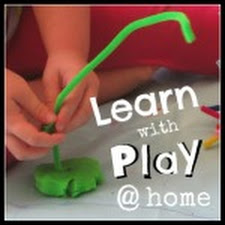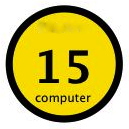After being introduced to the first 5 sight words your child can read a simple sentence.
These lessons will teach the following Common Core State Standards for Kindergarten:
READING STANDARDS: FOUNDATIONAL SKILLS
Print Concepts1. Demonstrate understanding of the organization and basic features of print.
a. Follow words from left to right, top to bottom, and page by page.
b. Recognize that spoken words are represented in written languageby specific sequences of letters.
c. Understand that words are separated by spaces in print
Phonics and Word Recognition3. Know and apply grade-level phonics and word analysis skills in decoding words both in isolation and in text.
c. Read common high-frequency words by sight (e.g., the, of, to, you, she, my, is, are, do, does).
Practice reading Sight Word Sentences
Reading the sentence with give them the chance to practice 1 to 1 correspondence, directional movement, the sight words and using initial letter. Write or print out the sentence below, and include a picture of a cat. Leave big spaces between the words, double space if you type it. This helps your early reader to distinguish between separate words. Strips of card stock work well:
1 to 1 correspondence: This is learning that you say one word for each word on the page. As your child is learning this they can point to each word as they say it. Their finger should be right below the word, not covering it. Model for them how to read the sentence putting your finger under each word as they say it. If they need help you can point and say the words while holding their finger, or having them rest their hand on top of yours. Be clear and concise.
Directional movement: You move from left to right across the page. When you get to the end of the line you move to the left of the line below and start over. You can teach and model this right along with the 1 to 1 correspondence.
 |
| 1 to 1 correspondence |
Directional movement: You move from left to right across the page. When you get to the end of the line you move to the left of the line below and start over. You can teach and model this right along with the 1 to 1 correspondence.
Sight words: Ask your child to point to any sight words they see in the sentence. A simple "frame" made out of card stock or a 3 X 5 card with the center cut out makes a fun way to find and show a known word.
 |
| Show me a word you know |
Using initial letter: This sentence has all sight words you are teaching your child except for the word "cat". Ask your child, "What letter would you expect to see at the beginning of the word, 'cat'?" Simply correct them if they are wrong and tell them, "Cat begins with the letter 'C'. Let's find the word 'cat'." Show them the word cat, and find the c at the beginning. Say the word cat together and hear the c at the beginning of the word.
This is something that is new to most parents, not decoding the entire word to begin with. Look at all of the things your child is paying attention to and learning: 1 to 1, left to right, and sight words. If you try to teach too much at once it all gets lost. Soon your child will move to decoding across the whole word. One step at a time!
Cut up sentence
Depending on how your child does reading the sentence you may just want to get it out and read it a few days in a row before moving on to the next step of cutting up the sentence.
Cut up sentence
Depending on how your child does reading the sentence you may just want to get it out and read it a few days in a row before moving on to the next step of cutting up the sentence.
Once your child can easily read the sentence you can cut the sentence apart and have your child put it back together. First mix up the words and have her read them individually, like flash cards.
Then she can put the sentence back together. Follow these steps:
As your child learns more words you can begin to write more sentences for your child to read. You can write the sentences on strips of card stock that can be handled and cut up. You can make up your own sentences or copy the ones below.
 |
| Cut up sentence |
- Ask her to tell you her sentence that she is going to make. "Here is a cat."
- "What is the first word in your sentence?" and have her find it for you.
- "What is the next word in your sentence?" Continue to the end of the sentence.
- "Show me the capital letter at the beginning of the sentence."
- "Show me the period at the end of your sentence."
- Finally ask her to read and "check" her sentence.
Using the words first, next, end, word, capital, period, all help your child to learn the parts of a sentence and how words work.
She can write her story on a new piece of paper and illustrate it to practice writing. Another option is to paste the words into a blank book and have the child draw an illustration. Every time you do a sentence you can add it to the book and soon your child will have her own book that she can read.
As your child learns more words you can begin to write more sentences for your child to read. You can write the sentences on strips of card stock that can be handled and cut up. You can make up your own sentences or copy the ones below.
 |
| Sentences for lists 1 through 2 |
 |
| Sentences for lists 1-3 |
 |
| Sentences for lists 1-4 |
or here
Print them on card stock and cut them into strips with one sentence on each strip. Once you have read the sentence together a few times you can cut the sentence apart and have your child put it back together. Talk about the capital at the beginning of the sentence and the punctuation at the end.
From  You can download a great free resource: Read it, Trace it, Paste it! These worksheets reinforce all of the most common sight words from this 40 word list.
You can download a great free resource: Read it, Trace it, Paste it! These worksheets reinforce all of the most common sight words from this 40 word list.
Have fun reading your sentences and watching your reader grow!








































